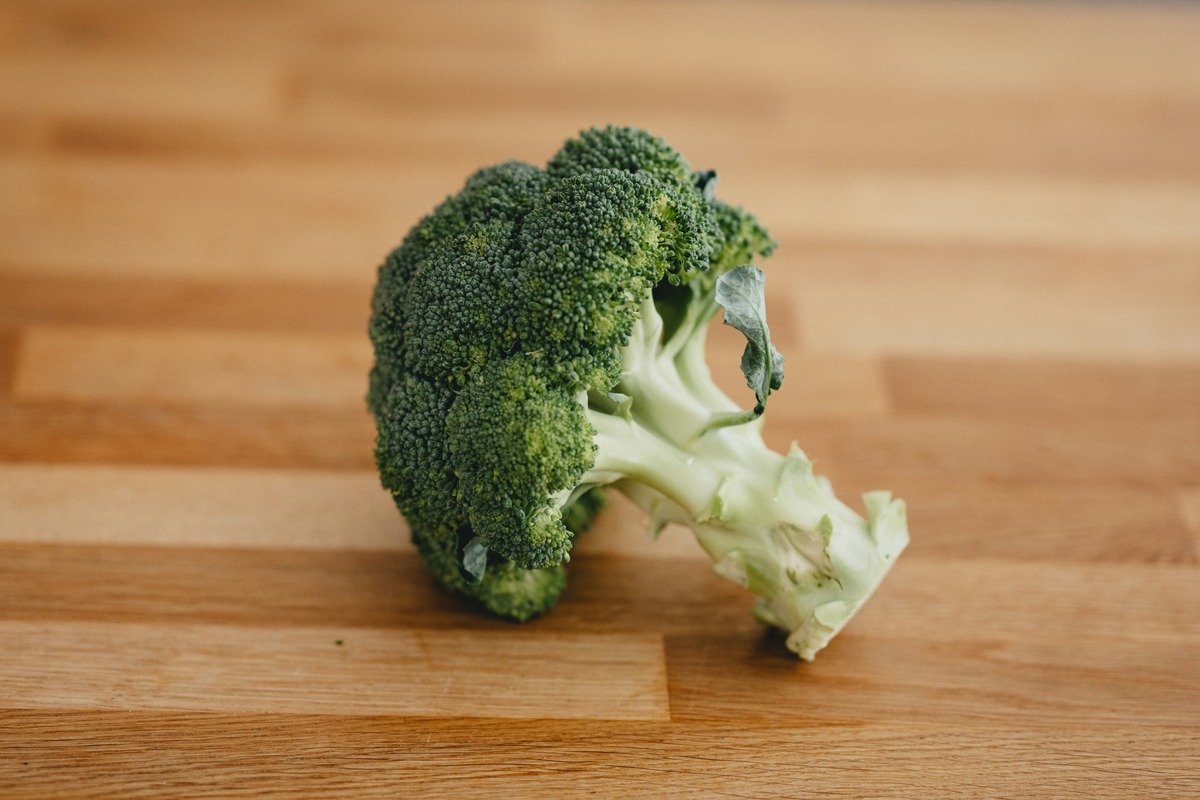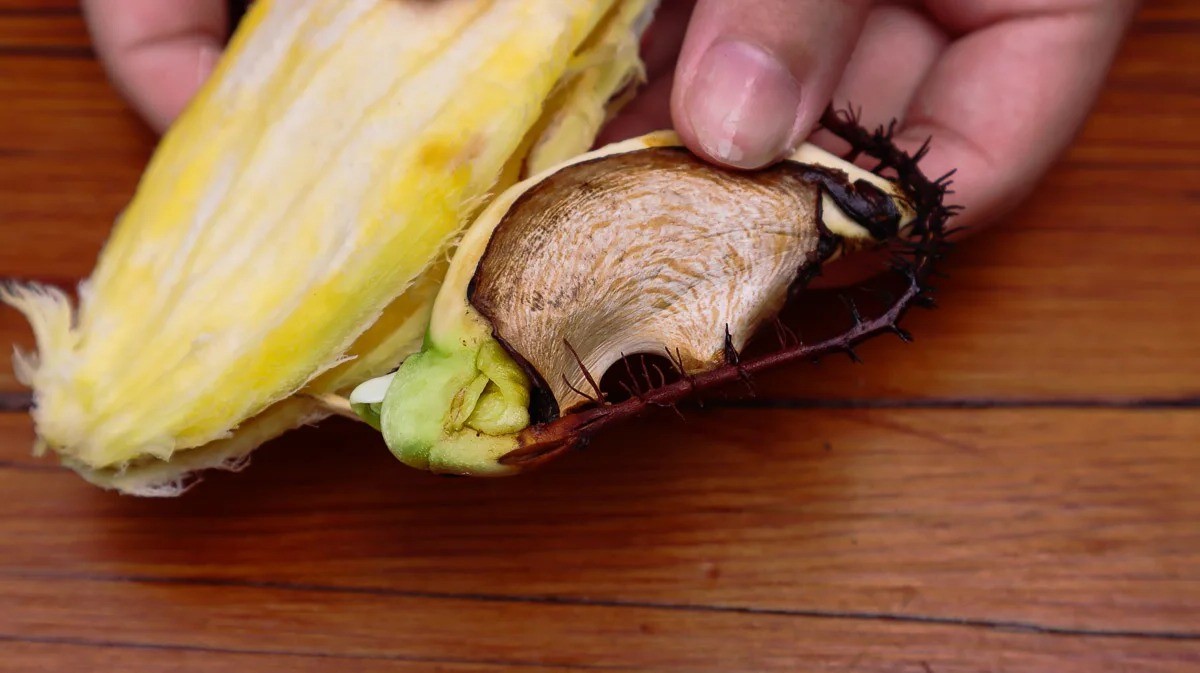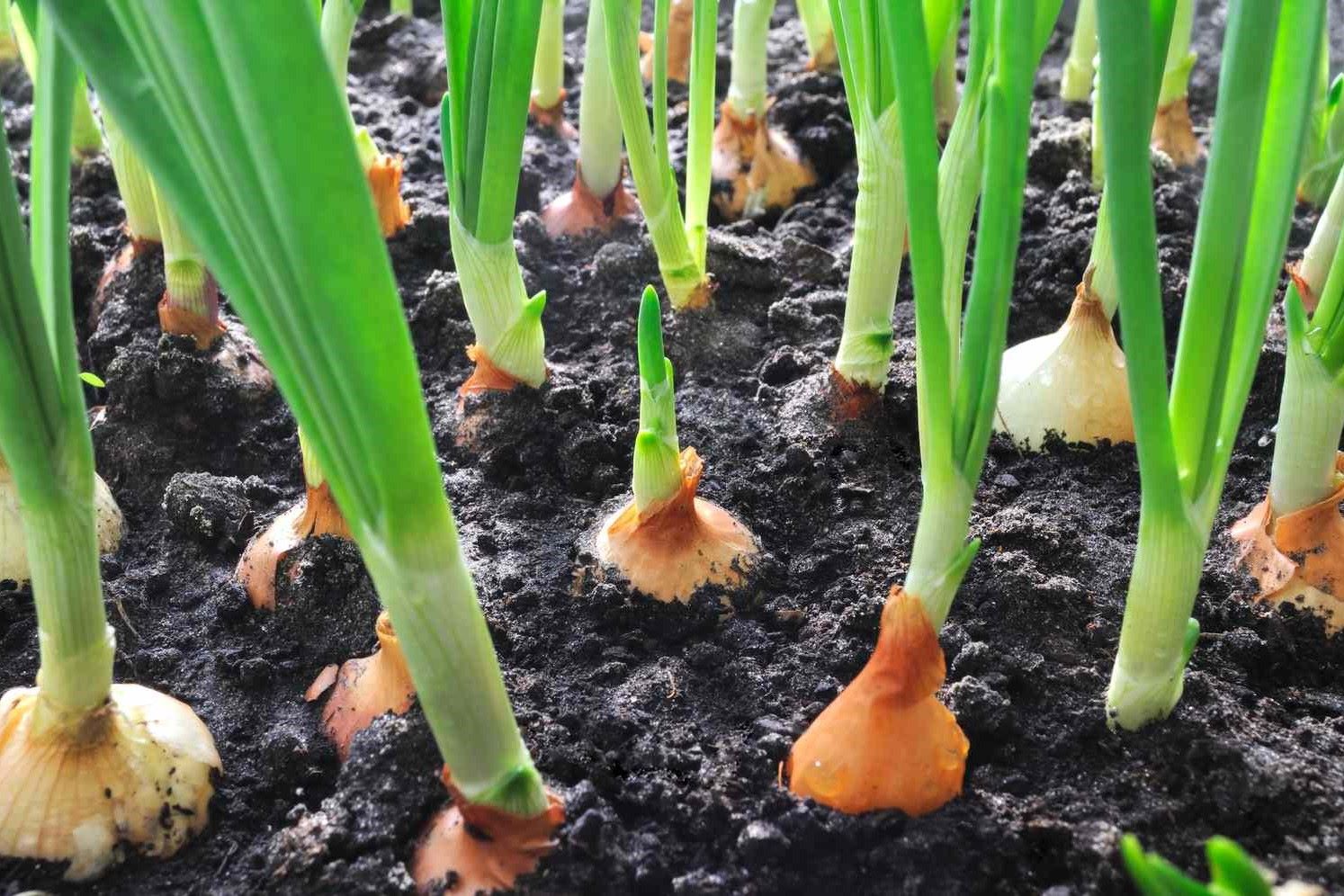Home>Home and Garden>The Ultimate Guide To Growing Broccoli In Pots And Containers


Home and Garden
The Ultimate Guide To Growing Broccoli In Pots And Containers
Modified: March 1, 2024
Learn how to grow broccoli in pots and containers with our comprehensive guide. Perfect for home and garden enthusiasts looking to cultivate their own produce.
(Many of the links in this article redirect to a specific reviewed product. Your purchase of these products through affiliate links helps to generate commission for Noodls.com, at no extra cost. Learn more)
Table of Contents
Introduction
Growing your own broccoli can be a rewarding and fulfilling experience, especially when you have limited outdoor space. Whether you're an urban gardener or simply looking to maximize your available space, cultivating broccoli in pots and containers is a practical and enjoyable way to enjoy this nutritious vegetable.
Broccoli, a member of the cabbage family, is known for its high nutritional value and versatility in various culinary dishes. It's rich in essential vitamins, minerals, and antioxidants, making it a valuable addition to any diet. By growing broccoli in pots and containers, you can have a fresh supply of this superfood right at your fingertips, even if you don't have a traditional garden plot.
In this comprehensive guide, we'll explore the essential steps and considerations for successfully growing broccoli in pots and containers. From choosing the right container to harvesting your homegrown broccoli, we'll cover everything you need to know to embark on this rewarding gardening journey.
By following the tips and techniques outlined in this guide, you'll be able to create an ideal environment for your broccoli plants to thrive, ensuring a bountiful harvest of crisp, flavorful florets. Whether you're a seasoned gardener or a novice with a green thumb, this guide will equip you with the knowledge and confidence to cultivate healthy and vibrant broccoli in a limited space.
So, let's roll up our sleeves, grab our gardening gloves, and embark on this exciting adventure of growing broccoli in pots and containers. With a bit of dedication and the right approach, you'll soon be enjoying the satisfaction of harvesting your very own homegrown broccoli, straight from your balcony, patio, or any other small outdoor space you have available.
Choosing the Right Container
Selecting the appropriate container is a crucial first step in successfully growing broccoli in pots and containers. The container you choose will directly impact the growth and development of your broccoli plants. Here's a detailed look at the factors to consider when choosing the right container for your broccoli:
Size and Depth
Broccoli plants have extensive root systems, so it's essential to select a container that provides ample space for root growth. Opt for a container that is at least 12-18 inches deep to accommodate the roots and allow for proper anchorage. Additionally, ensure that the container has a diameter of 12-18 inches to provide sufficient room for the plant to spread out.
Material
When it comes to the material of the container, consider using durable and breathable options such as plastic, ceramic, or fabric pots. These materials allow for proper aeration and drainage, which are essential for healthy root development. Avoid metal containers, as they can heat up quickly and potentially harm the roots during hot weather.
Drainage Holes
Good drainage is critical for the overall health of broccoli plants. Look for containers with multiple drainage holes at the bottom to prevent waterlogging, which can lead to root rot and other moisture-related issues. If the container you choose doesn't have sufficient drainage, consider drilling additional holes to ensure proper water drainage.
Mobility
Since potted broccoli may require adjustments in sunlight exposure and temperature control, consider the mobility of the container. Opt for containers that are lightweight and easy to move, especially if you need to relocate them to optimize sunlight or protect the plants from extreme weather conditions.
Aesthetic Appeal
While the functionality of the container is paramount, it's also worth considering the aesthetic appeal, especially if you plan to display your broccoli plants in visible outdoor spaces. Choose containers that complement your outdoor decor and personal style, adding a touch of visual appeal to your gardening space.
By carefully considering these factors and selecting the right container, you can create an optimal environment for your broccoli plants to thrive. The container you choose will play a significant role in providing the necessary support, space, and conditions for healthy growth, ultimately contributing to a successful harvest of fresh and flavorful broccoli.
Selecting the Best Broccoli Variety for Containers
When it comes to growing broccoli in containers, selecting the right variety is a crucial decision that can significantly impact the success of your gardening endeavor. Not all broccoli varieties are well-suited for container cultivation, so it's essential to choose a type that thrives in confined spaces while still producing abundant and flavorful florets. Here are some top considerations for selecting the best broccoli variety for containers:
Compact Growth Habit
Opt for broccoli varieties that exhibit a compact growth habit, as they are better suited for container cultivation. Look for terms such as "compact," "bush," or "miniature" when selecting broccoli seeds or seedlings. These varieties are specifically bred to thrive in limited spaces, making them ideal for container gardening.
Early Maturing Varieties
Consider choosing broccoli varieties that have a relatively short maturity period. Early maturing varieties are well-suited for container gardening, as they reach harvestable size within a shorter timeframe. This not only allows you to enjoy homegrown broccoli sooner but also accommodates the space limitations of containers.
Heat Tolerance
In some regions, container-grown broccoli may be exposed to higher temperatures, especially during the summer months. Therefore, selecting broccoli varieties with heat tolerance is advantageous. Look for heat-tolerant or heat-resistant varieties that can withstand warmer conditions without compromising their growth and productivity.
Disease Resistance
Opt for broccoli varieties that exhibit resistance to common diseases and pests. Disease-resistant varieties are less susceptible to fungal infections and other ailments, reducing the likelihood of plant damage and ensuring a healthier growing environment. Look for varieties that are specifically bred for disease resistance, particularly those that are prevalent in your region.
Flavor and Nutritional Value
While considering the practical aspects of container gardening, don't overlook the flavor and nutritional value of the broccoli variety. Choose a variety that aligns with your taste preferences and nutritional requirements. Whether you prefer a sweeter flavor or prioritize specific nutrients, such as vitamin content, select a variety that meets your culinary and dietary preferences.
By carefully evaluating these factors and selecting a broccoli variety that aligns with the constraints and opportunities of container gardening, you can set the stage for a successful and rewarding growing experience. The right broccoli variety will thrive in the confined space of a container, yielding an abundant harvest of delicious and nutritious florets, all within the convenience of your outdoor living space.
Preparing the Soil
Preparing the soil is a fundamental step in creating an optimal growing environment for broccoli in pots and containers. While container gardening offers flexibility in choosing the planting medium, it's essential to ensure that the soil provides the necessary nutrients, drainage, and structure to support healthy plant growth. Here's a detailed guide on preparing the soil for your container-grown broccoli:
Choosing the Right Potting Mix
Selecting a high-quality potting mix is crucial for container-grown broccoli. Opt for a well-draining mix specifically formulated for vegetables or container gardening. Avoid using garden soil, as it can become compacted and hinder root development in containers. Look for a lightweight mix that contains a balanced blend of organic matter, perlite, vermiculite, and other amendments to promote aeration and moisture retention.
Amending the Potting Mix
To further enhance the potting mix, consider incorporating organic matter such as compost or well-rotted manure. These amendments enrich the soil with essential nutrients and improve its overall structure. Mix the organic matter thoroughly into the potting mix to ensure uniform distribution of nutrients throughout the container.
Adjusting pH Levels
Broccoli thrives in slightly acidic soil with a pH range of 6.0 to 7.0. Use a pH testing kit to measure the acidity of the potting mix. If the pH is outside the optimal range, adjust it by adding lime to raise the pH or elemental sulfur to lower it. Maintaining the correct pH level is crucial for ensuring that the plants can efficiently absorb nutrients from the soil.
Preparing the Container
Before filling the container with the prepared potting mix, ensure that it is clean and free from any debris or pathogens. Sanitize the container with a mild bleach solution and allow it to dry thoroughly before adding the soil. This simple step helps create a clean and disease-free environment for your broccoli plants.
Creating a Planting Bed
Once the potting mix is in place, create a level planting bed within the container. Gently firm the soil surface to provide a stable base for planting the broccoli seeds or seedlings. Ensure that the planting bed is slightly below the rim of the container to prevent water runoff and allow for easy watering.
By meticulously preparing the soil in your containers, you can establish an ideal foundation for the successful growth of broccoli plants. The nutrient-rich and well-draining soil will provide the necessary support for robust root development and overall plant vigor, setting the stage for a thriving broccoli harvest in your limited outdoor space.
Planting Broccoli Seeds or Seedlings
Planting broccoli seeds or seedlings is a critical phase in the journey of growing broccoli in pots and containers. Whether you opt for seeds or young seedlings, the planting process sets the stage for the development of robust broccoli plants that will eventually yield a bountiful harvest of nutritious florets. Here's a detailed guide on the essential steps for planting broccoli in containers:
Seed Starting
If you choose to start from seeds, begin the process indoors approximately 6-8 weeks before the last expected frost date in your area. Use seedling trays or small pots filled with a seed starting mix. Plant the broccoli seeds at a depth of 1/4 inch and lightly cover them with the starting mix. Ensure the soil remains consistently moist but not waterlogged to facilitate germination. Place the trays in a warm location with ample sunlight or use grow lights to provide sufficient illumination for seedling growth.
Transplanting Seedlings
Once the broccoli seedlings have developed several sets of true leaves and sturdy stems, they are ready for transplanting into the containers. Choose seedlings that exhibit healthy growth and vibrant green foliage. When transplanting, carefully remove the seedlings from the seedling trays, taking care not to disturb the roots excessively. Gently loosen the root ball if the roots have become compacted, allowing them to spread out more easily in the new container.
Planting Depth and Spacing
When planting the seedlings in the containers, ensure that they are positioned at the same depth as they were in the seedling trays. Space the seedlings approximately 18-24 inches apart to provide ample room for growth and air circulation. Proper spacing is essential for preventing overcrowding, which can lead to competition for nutrients and hinder overall plant development.
Watering and Mulching
After planting the broccoli seedlings, water them thoroughly to settle the soil and provide initial hydration. Ensure that the soil is evenly moist but not waterlogged. Consider applying a layer of organic mulch, such as straw or shredded leaves, around the base of the seedlings to conserve moisture, suppress weed growth, and maintain a consistent soil temperature. Mulching also helps protect the shallow roots of the young plants.
Temperature and Environmental Considerations
Monitor the ambient temperature and environmental conditions to ensure that the newly planted broccoli seedlings are not exposed to extreme heat or cold. If necessary, provide temporary shade or protection from intense sunlight, especially during the initial days after transplanting. Additionally, be mindful of potential frost events and take appropriate measures to safeguard the tender seedlings from adverse weather conditions.
By following these steps and providing attentive care during the planting process, you can establish a strong foundation for the growth and development of broccoli plants in containers. Whether you start from seeds or transplant young seedlings, the meticulous approach to planting sets the stage for a successful broccoli harvest, bringing the satisfaction of homegrown produce to your small outdoor space.
Read more: Introduction To Containers
Watering and Fertilizing
Proper watering and fertilizing practices are essential for nurturing healthy and productive broccoli plants in containers. By understanding the specific requirements of container-grown broccoli and implementing targeted watering and fertilization strategies, you can optimize the growth and development of your plants, ultimately leading to a successful harvest of flavorful florets.
Watering
Maintaining adequate soil moisture is crucial for the overall health and vitality of container-grown broccoli. Consistent and appropriate watering helps ensure that the plants receive the hydration they need to support robust growth and the development of compact, tender florets. Here are key considerations for watering broccoli in containers:
-
Moisture Monitoring: Regularly assess the moisture level of the potting mix by inserting your finger into the soil. If the top inch of the soil feels dry to the touch, it's time to water the plants. However, avoid overwatering, as excessively soggy soil can lead to root rot and other moisture-related issues.
-
Watering Frequency: Container-grown broccoli typically requires more frequent watering compared to plants in traditional garden beds, as containers tend to dry out more quickly. Aim to water the plants deeply whenever the soil surface becomes dry, ensuring that the water penetrates the entire root zone.
-
Morning Watering: Schedule watering sessions in the morning to allow the foliage and soil surface to dry out during the day. This helps minimize the risk of fungal diseases and promotes a healthier growing environment for the broccoli plants.
-
Consistent Moisture: Strive to maintain consistent moisture levels in the soil, avoiding prolonged periods of dryness or waterlogged conditions. Consistent moisture supports steady growth and minimizes stress on the plants, ultimately contributing to better overall productivity.
Fertilizing
In addition to proper watering, providing the appropriate nutrients through fertilization is vital for sustaining the vigorous growth and nutritional quality of container-grown broccoli. Here's how to effectively fertilize your broccoli plants in containers:
-
Balanced Fertilizer: Use a balanced, water-soluble fertilizer formulated for vegetables to supply essential nutrients to the broccoli plants. Look for a fertilizer with a balanced NPK ratio, such as 10-10-10 or 20-20-20, to ensure that the plants receive a comprehensive blend of nitrogen, phosphorus, and potassium.
-
Feeding Schedule: Begin fertilizing the broccoli plants approximately 3-4 weeks after transplanting or once the seedlings have become established. Apply the fertilizer according to the manufacturer's instructions, typically diluting it in water and administering it to the plants at regular intervals, such as every 2-3 weeks.
-
Avoid Overfeeding: While providing adequate nutrients is crucial, avoid overfeeding the broccoli plants, as excessive fertilizer can lead to imbalanced growth and potential nutrient toxicity. Follow the recommended application rates and avoid applying fertilizer to dry soil, as this can cause root burn.
-
Organic Alternatives: If you prefer organic gardening practices, consider using organic fertilizers such as compost tea, fish emulsion, or seaweed extract. These natural alternatives provide a gentle yet effective source of nutrients for container-grown broccoli, promoting sustainable and environmentally friendly cultivation.
By adhering to these watering and fertilizing guidelines, you can create an optimal growing environment for your container-grown broccoli, fostering vigorous growth, abundant yields, and exceptional flavor. The attentive application of water and nutrients ensures that your broccoli plants receive the care they need to thrive in the confined space of containers, ultimately rewarding you with a plentiful harvest of homegrown, nutrient-rich broccoli florets.
Providing the Right Amount of Sunlight
Ensuring that your container-grown broccoli receives the appropriate amount of sunlight is a critical factor in promoting healthy growth and maximizing the yield of flavorful florets. Broccoli, like many other vegetable crops, thrives in full sunlight, which is generally defined as at least 6-8 hours of direct sunlight per day. When cultivating broccoli in containers, it's essential to strategically manage their exposure to sunlight to optimize their photosynthetic activity and overall development.
Here are key considerations for providing the right amount of sunlight to your container-grown broccoli:
Read more: How To Steam Broccoli In The Microwave
Sunlight Requirements
Broccoli plants require ample sunlight to thrive and produce high-quality florets. When selecting a location for your containers, prioritize areas that receive full sunlight for the majority of the day. Position the containers in a spot where they can benefit from direct sunlight, such as a south-facing balcony, patio, or rooftop garden. Adequate sunlight exposure is essential for promoting robust growth, sturdy stems, and the development of compact, tender florets.
Sunlight Management
While full sunlight is ideal for broccoli, it's important to consider the intensity of the sun, especially during the hottest part of the day. In regions with scorching midday sun, provide partial shade or temporary shelter to protect the broccoli plants from excessive heat stress. This can be achieved by using shade cloth, movable umbrellas, or strategically positioning the containers to receive morning and late afternoon sunlight while avoiding the harsh midday rays.
Seasonal Adjustments
As the seasons change, the angle and duration of sunlight also fluctuate. During the cooler months, ensure that the containers receive maximum sunlight exposure to compensate for the reduced daylight hours. In contrast, as temperatures rise in the summer, monitor the plants for signs of heat stress and consider relocating the containers to areas with partial shade during the hottest part of the day. Adapting to seasonal variations in sunlight helps maintain an optimal growing environment for the broccoli plants throughout the year.
Light Reflection
Maximize sunlight exposure by leveraging light reflection within your gardening space. Surrounding surfaces, such as light-colored walls, fences, or reflective materials, can help bounce sunlight onto the plants, enhancing their overall light intake. By strategically positioning the containers near reflective surfaces, you can amplify the amount of sunlight available to the broccoli plants, further supporting their growth and productivity.
By carefully managing the sunlight exposure of your container-grown broccoli, you can create an environment that fosters vigorous growth, sturdy stems, and the development of abundant, tender florets. The strategic optimization of sunlight ensures that your broccoli plants receive the energy they need to thrive, ultimately leading to a rewarding harvest of homegrown, nutrient-rich broccoli within the confines of your outdoor living space.
Protecting Broccoli from Pests and Diseases
Protecting your container-grown broccoli from pests and diseases is essential to maintain the health and productivity of your plants. While broccoli is a resilient vegetable, it is susceptible to a range of common pests and diseases that can compromise its growth and overall vitality. By implementing proactive measures and practicing vigilant monitoring, you can safeguard your broccoli plants from potential threats, ensuring a thriving and bountiful harvest. Here's a comprehensive guide to protecting your broccoli from pests and diseases:
Pest Management
-
Identification: Familiarize yourself with common pests that affect broccoli, such as aphids, cabbage worms, and flea beetles. Regularly inspect the foliage and stems for signs of pest infestation, including visible damage, eggs, or the presence of the pests themselves.
-
Natural Predators: Encourage natural predators, such as ladybugs and lacewings, that feed on common broccoli pests. Planting companion flowers, such as marigolds and alyssum, can attract beneficial insects that help control pest populations.
-
Physical Barriers: Consider using floating row covers or lightweight netting to create a physical barrier that prevents pests from accessing the broccoli plants. These barriers can be particularly effective in deterring flying insects while allowing sunlight and moisture to reach the plants.
-
Organic Sprays: Utilize organic insecticidal soaps or neem oil to combat pest infestations. These natural remedies effectively target pests while minimizing harm to beneficial insects and the environment.
Disease Prevention
-
Sanitation: Maintain a clean gardening environment by removing fallen leaves, debris, and plant residues from the vicinity of the containers. Clearing away decaying organic matter helps reduce the risk of disease development and minimizes potential sources of infection.
-
Proper Watering: Avoid overhead watering, as wet foliage can contribute to the spread of fungal diseases. Water the plants at the base to keep the foliage dry and minimize the risk of fungal infections, such as powdery mildew and downy mildew.
-
Crop Rotation: If you have the flexibility to rotate your container-grown crops, avoid planting broccoli in the same location in consecutive growing seasons. Crop rotation helps disrupt the life cycles of pests and diseases, reducing their impact on the plants.
-
Disease-Resistant Varieties: When selecting broccoli varieties for container cultivation, prioritize those with inherent resistance to common diseases prevalent in your region. Disease-resistant varieties offer added protection against specific pathogens, enhancing the overall resilience of the plants.
By diligently implementing these pest and disease management practices, you can create a protective shield around your container-grown broccoli, mitigating the risk of pest infestations and disease outbreaks. The proactive approach to pest and disease control not only preserves the health and vigor of your broccoli plants but also contributes to a sustainable and thriving container gardening ecosystem.
Harvesting Broccoli
Harvesting broccoli is a highly anticipated and rewarding culmination of your efforts in container gardening. The timing and technique of harvesting broccoli directly impact the quality, flavor, and subsequent regrowth of the plants. Here's a detailed guide to ensure a successful and satisfying broccoli harvest from your containers:
Observing Maturity
Before harvesting, closely monitor the broccoli plants for signs of maturity. Look for firm, compact heads that are deep green or purple in color, depending on the variety. The individual florets should be tightly closed and well-formed, indicating readiness for harvest. Avoid delaying the harvest beyond the optimal stage, as overmature heads can become tough and less flavorful.
Selective Harvesting
When the main central head reaches its peak size and density, it's time to initiate the harvesting process. Use a sharp knife or garden shears to cut the central head at a slant, approximately 5-6 inches below the head. Make the cut just above the first set of leaves below the head, allowing for potential side shoots to develop for subsequent harvests.
Side Shoot Harvesting
After the central head is harvested, continue to monitor the plants for the emergence of side shoots, also known as "floret buds." These smaller heads develop in the axils of the remaining leaves and can be harvested as they reach a suitable size. Regularly inspect the plants and harvest the side shoots promptly to encourage the development of additional secondary heads.
Regrowth Potential
By harvesting the central head and subsequent side shoots in a timely manner, you can stimulate the regrowth of the broccoli plants. Proper harvesting practices promote the development of new shoots, extending the overall harvest period and maximizing the yield from each plant. With attentive care and selective harvesting, your container-grown broccoli can continue to produce flavorful florets over an extended period.
Read more: Tips For Caring For Hostas In Containers
Post-Harvest Care
After harvesting, promptly refrigerate the harvested broccoli heads to preserve their freshness and nutritional value. Store the heads in a perforated plastic bag in the refrigerator's crisper drawer, where they can remain fresh for up to a week. Proper post-harvest handling ensures that you can enjoy the full flavor and nutritional benefits of your homegrown broccoli.
By following these guidelines for harvesting broccoli from your containers, you can optimize the yield, flavor, and regrowth potential of your plants. The careful and selective approach to harvesting not only ensures a plentiful supply of fresh, tender florets but also encourages the continued productivity of your container-grown broccoli, allowing you to savor the rewards of your gardening endeavors.
Conclusion
In conclusion, growing broccoli in pots and containers offers a versatile and rewarding gardening experience, allowing individuals with limited outdoor space to cultivate this nutritious and flavorful vegetable. Through the careful selection of containers, the choice of suitable broccoli varieties, meticulous soil preparation, and attentive care throughout the planting and growing stages, it is possible to achieve a successful harvest of homegrown broccoli within confined outdoor living spaces.
The journey of growing broccoli in containers begins with the thoughtful selection of the right container, considering factors such as size, material, drainage, mobility, and aesthetic appeal. By choosing containers that provide ample space for root development and ensuring proper drainage, gardeners can create an ideal environment for their broccoli plants to thrive.
Selecting the best broccoli variety for containers is equally crucial, with an emphasis on compact growth habits, early maturity, heat tolerance, disease resistance, and nutritional value. By carefully evaluating these factors, gardeners can choose varieties that are well-suited for container cultivation, setting the stage for a successful growing experience.
Preparing the soil in containers involves the use of high-quality potting mix, amendments, pH adjustments, and the creation of a suitable planting bed. These steps lay the foundation for healthy root development and provide the necessary nutrients for robust plant growth.
The planting process, including seed starting and transplanting, sets the stage for the development of strong and productive broccoli plants. By following best practices for planting depth, spacing, watering, and environmental considerations, gardeners can establish a thriving broccoli crop in their containers.
Furthermore, providing the right amount of sunlight, implementing effective watering and fertilizing practices, and protecting broccoli plants from pests and diseases are essential components of successful container gardening. By carefully managing these aspects, gardeners can create an optimal growing environment for their broccoli, ultimately leading to a bountiful harvest of nutritious and flavorful florets.
In the culmination of the growing cycle, the selective harvesting of broccoli heads and side shoots ensures a continuous supply of fresh produce, while also stimulating regrowth for an extended harvest period.
In essence, the process of growing broccoli in pots and containers is a testament to the adaptability and resilience of gardening practices. It demonstrates that with the right knowledge, techniques, and dedication, individuals can transform limited outdoor spaces into thriving sources of fresh, homegrown produce. Whether it's a balcony, patio, or rooftop garden, the possibilities for cultivating nutritious and delicious broccoli are within reach, enriching the lives and palates of container gardeners.





